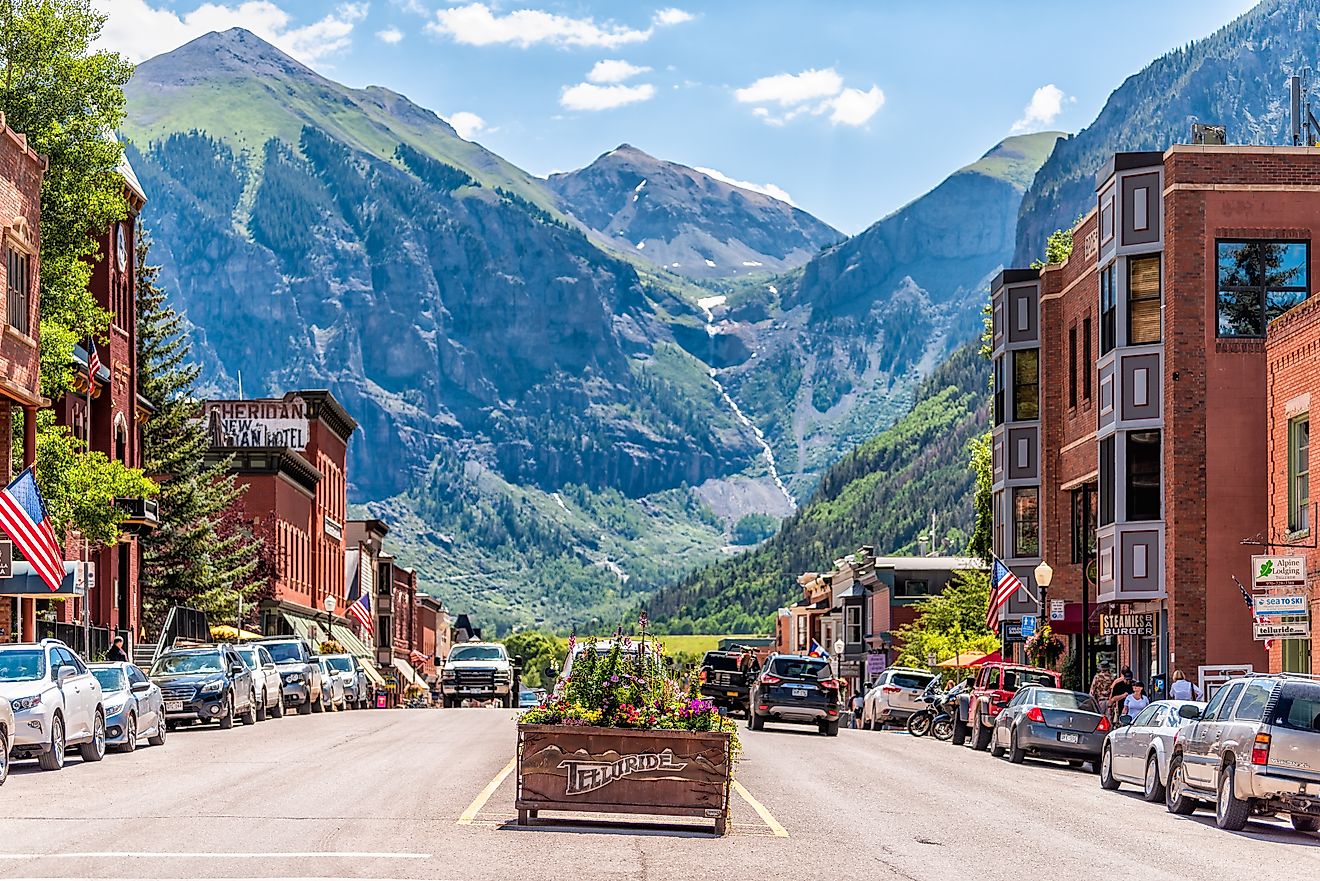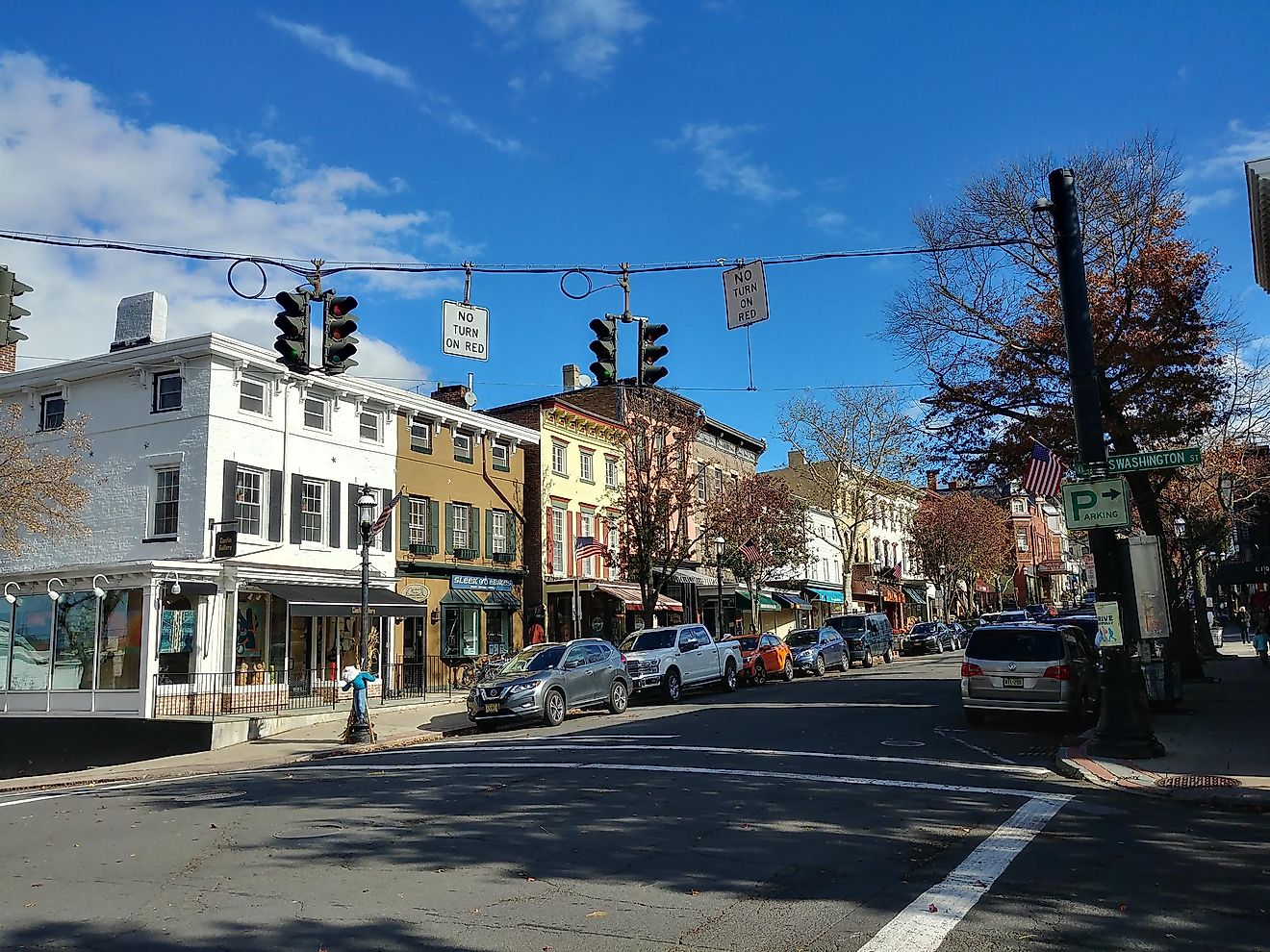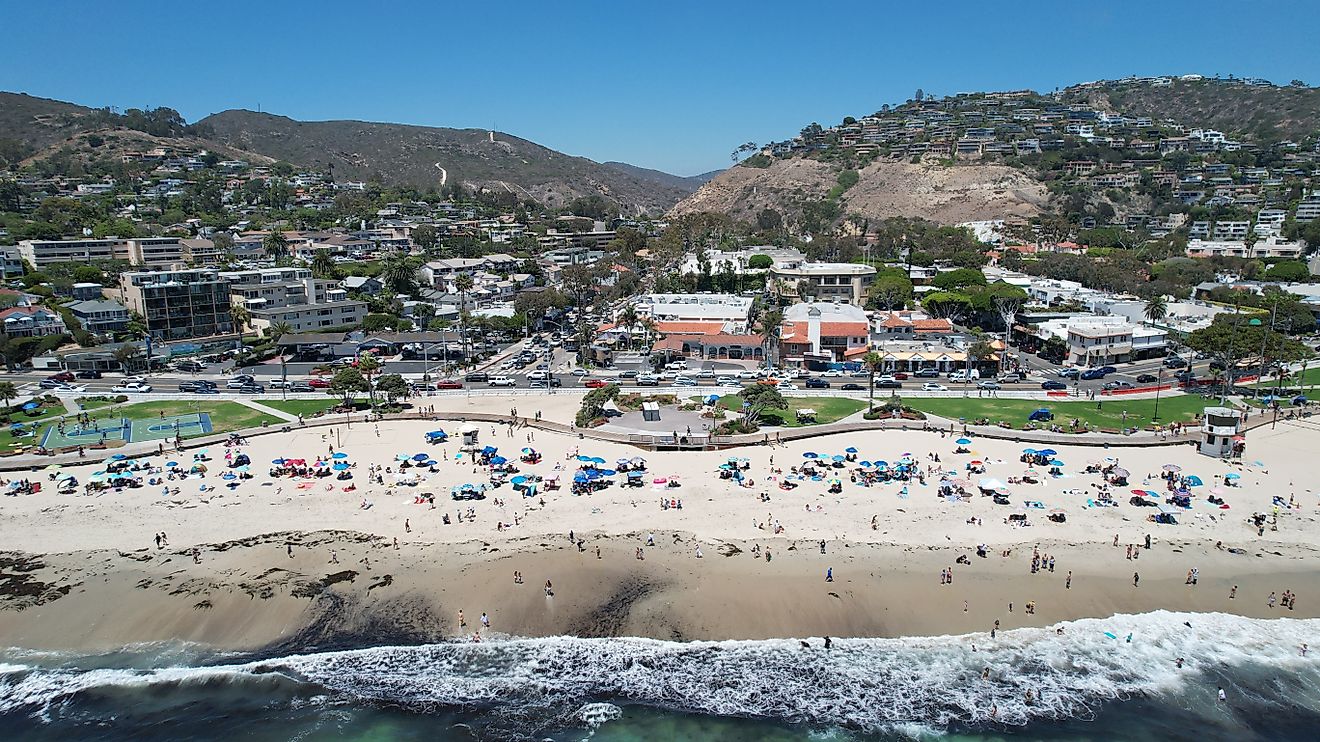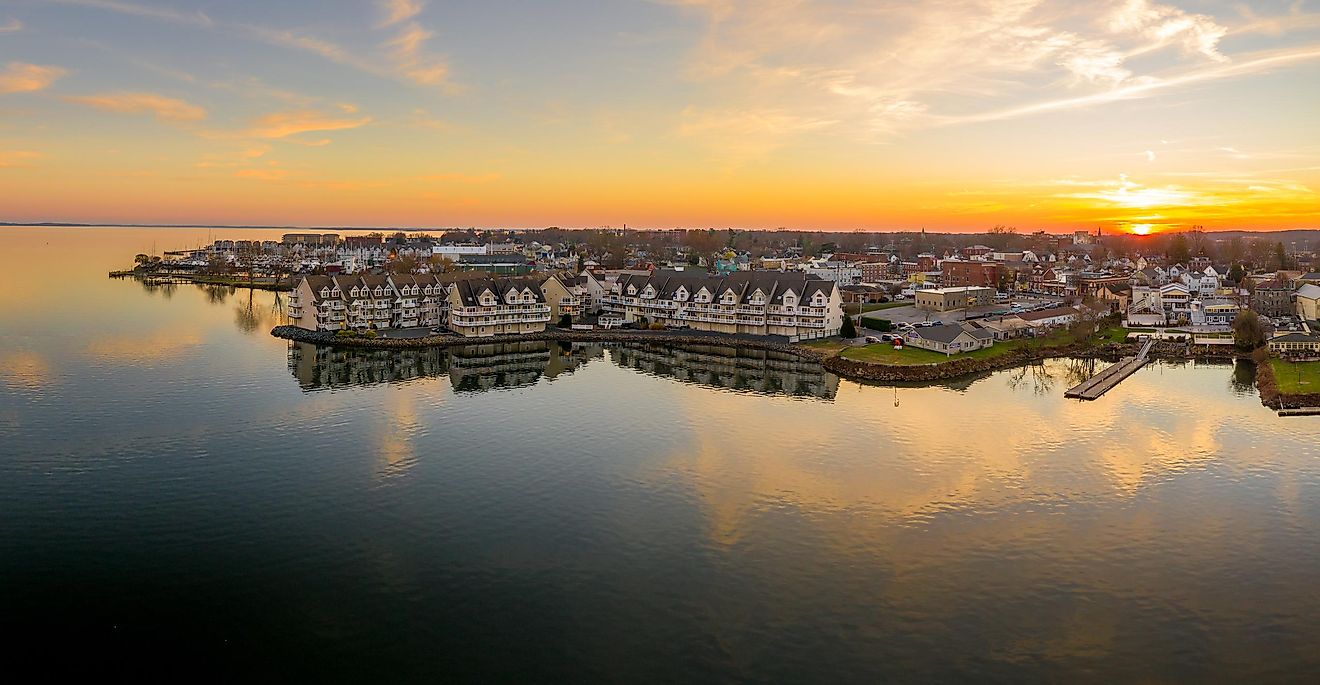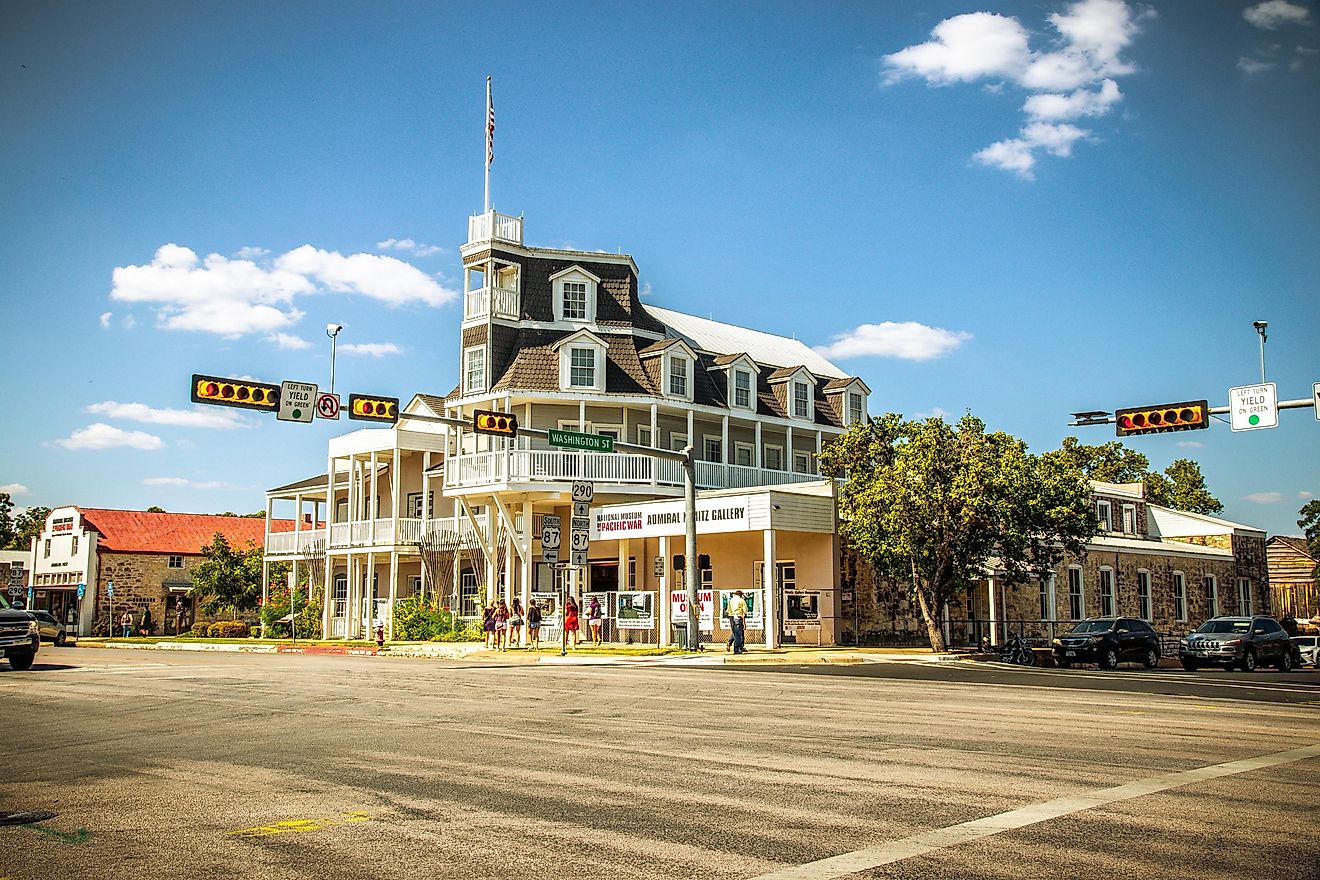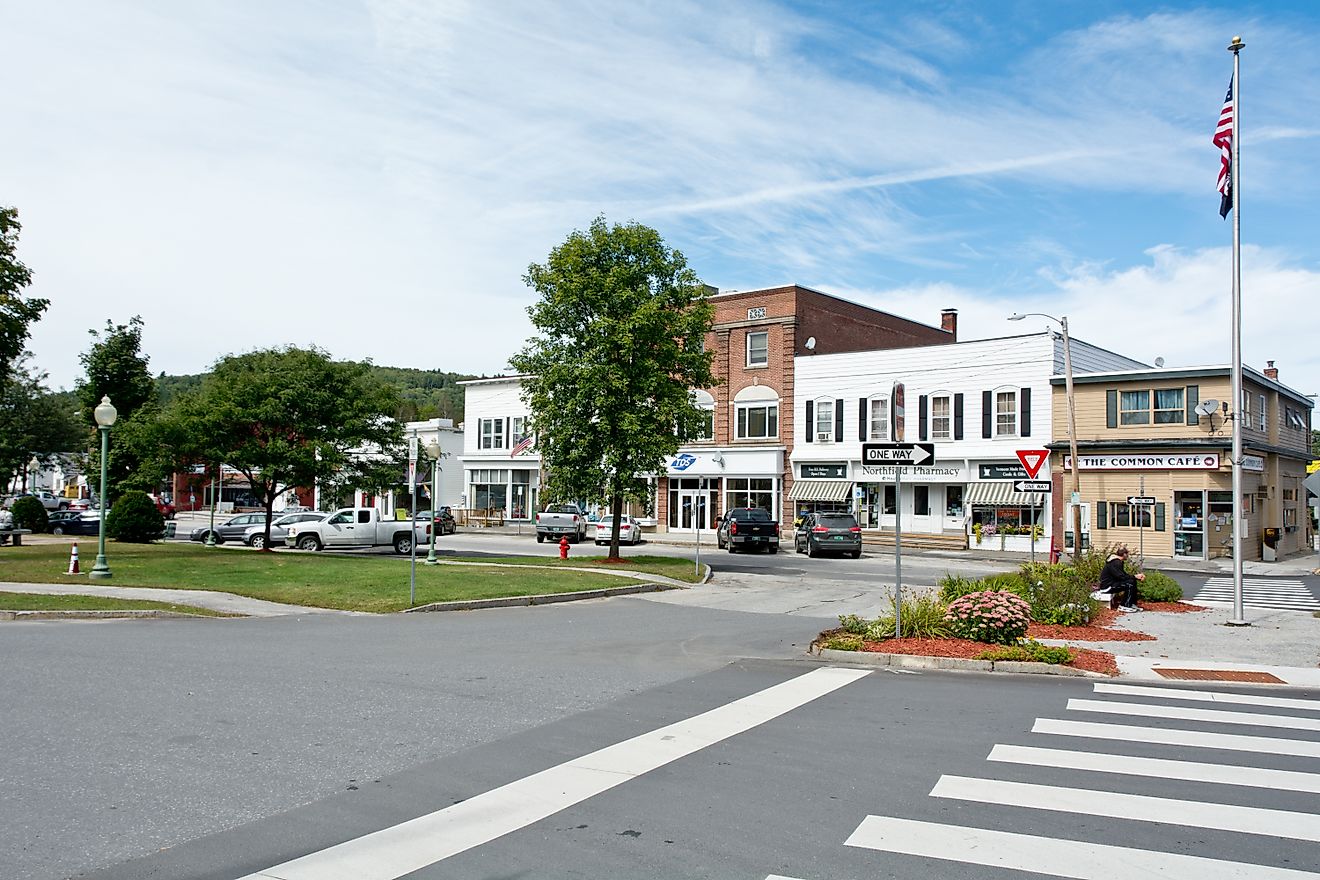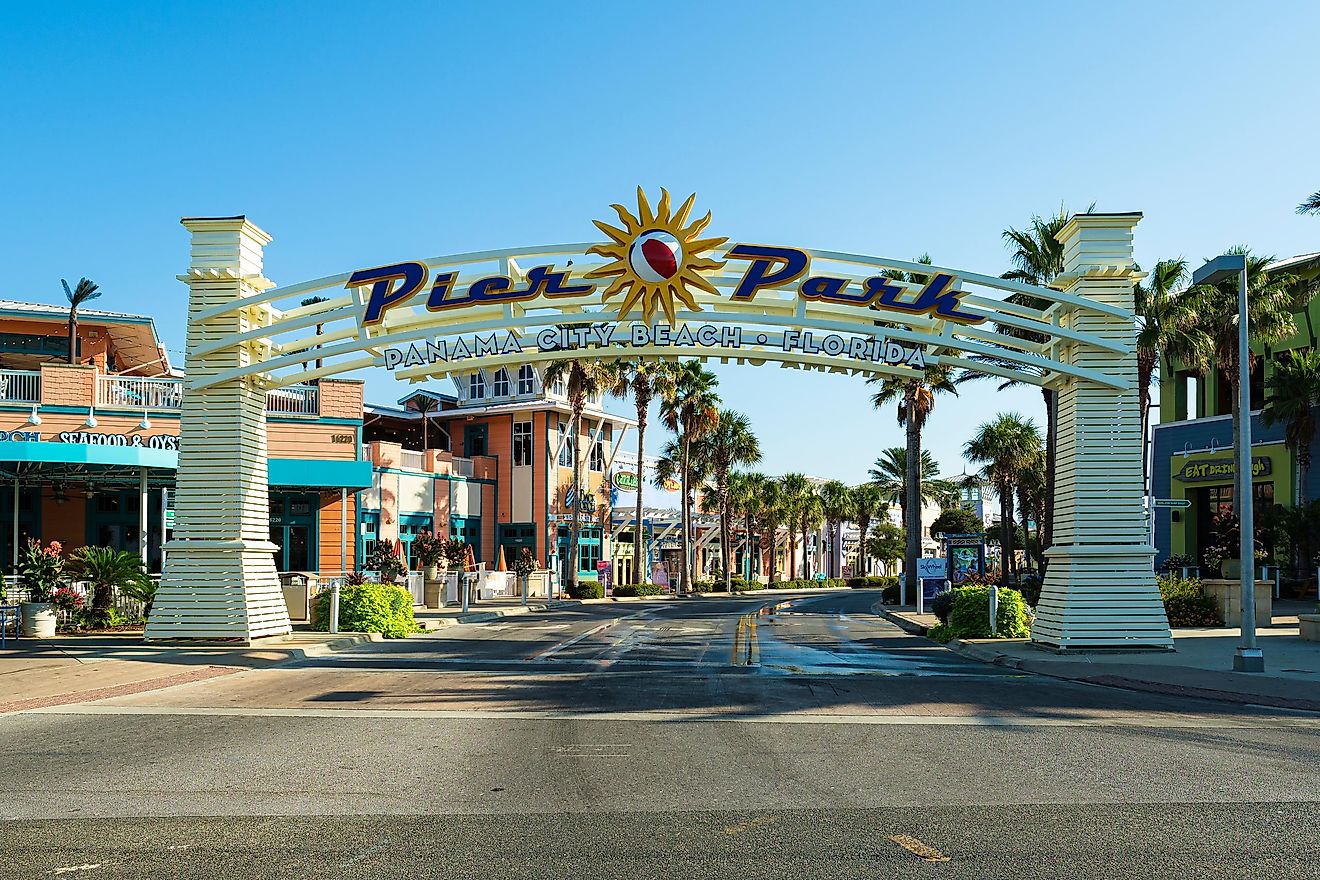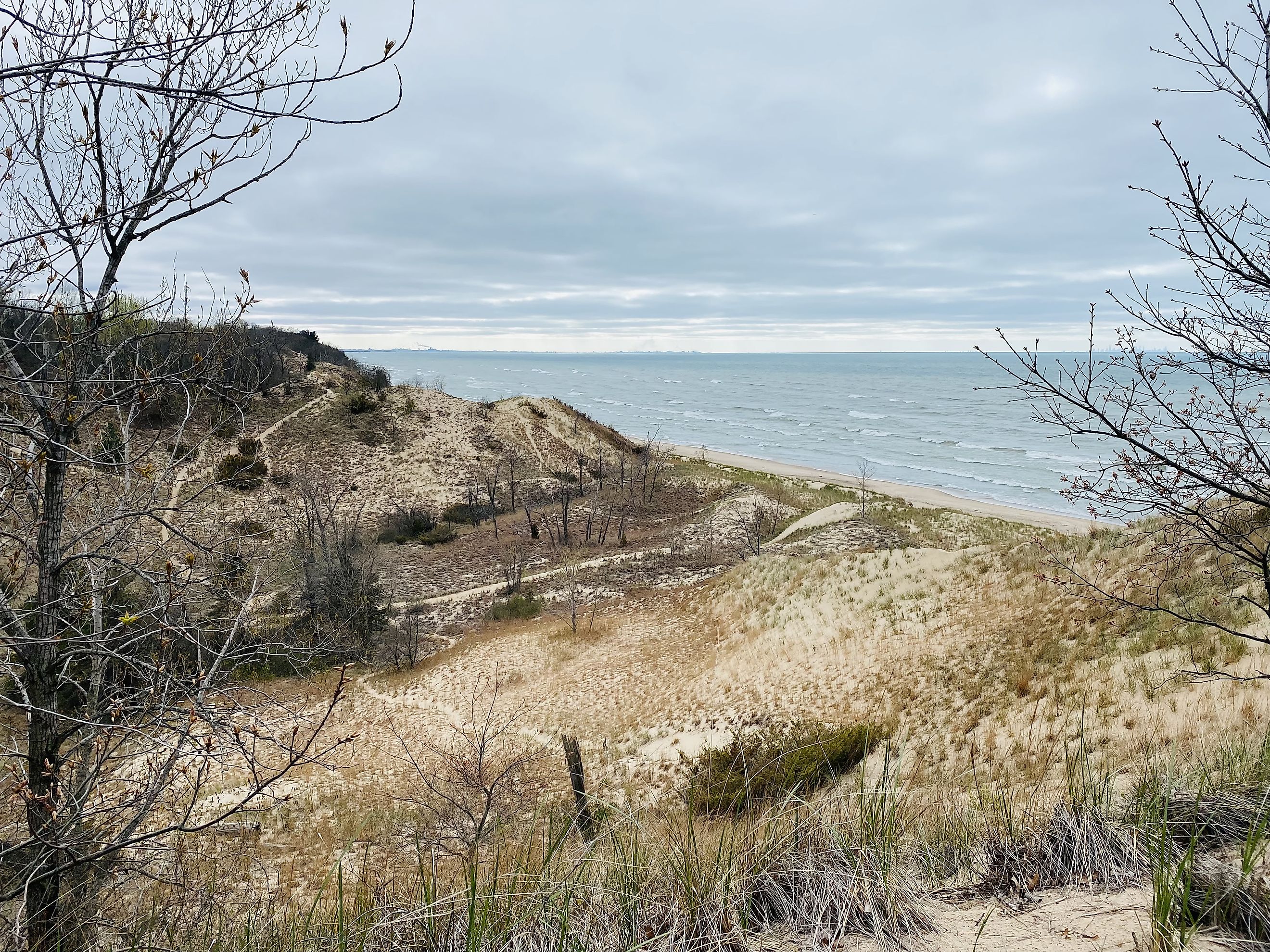
Indiana Dunes State Park
Indiana Dunes State Park enshrines the wild and windswept shoreline of southeastern Lake Michigan. The Hoosier State snags a relatively small portion of this Great Lake, but makes the most of it with not only a sizable state park, but the encompassing Indiana Dunes National Park (more on this peculiarity in a moment). I had the chance to visit this special place on a not-so-special April day. But even in the face of brisk gusts and overcast skies, I thoroughly enjoyed my overnight stay. Allow me to take you on a vicarious tour of Indiana's lakefront gem.
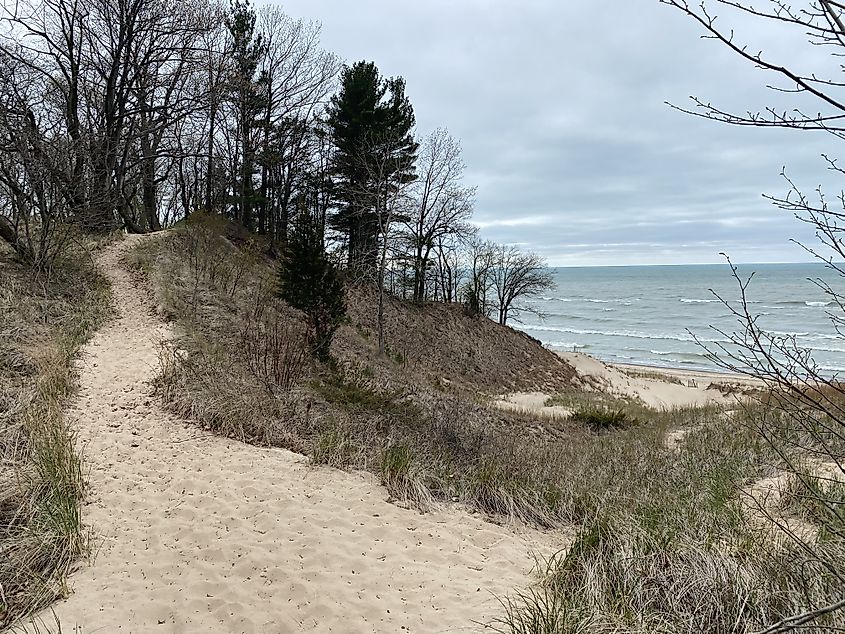
Hear From a Local:
"What I like most about Indiana Dunes State Park is the way that every bit of the nature, and the production around it, all works together to remind me of the finger of God. My favorite place in the world is out there on the beach, at night, where I can look out and see the sky bleed into the lake and the land around it. The steel mills in the distance, and the lighthouse over to the east - it all comes together in a way that's honest. There's humanity, and there's the nature that we work to keep in a state that it used to be in. The combination of the natural and artificial makes me feel that everything is being orchestrated together."
- Park Ranger (Anonymous)
Geography
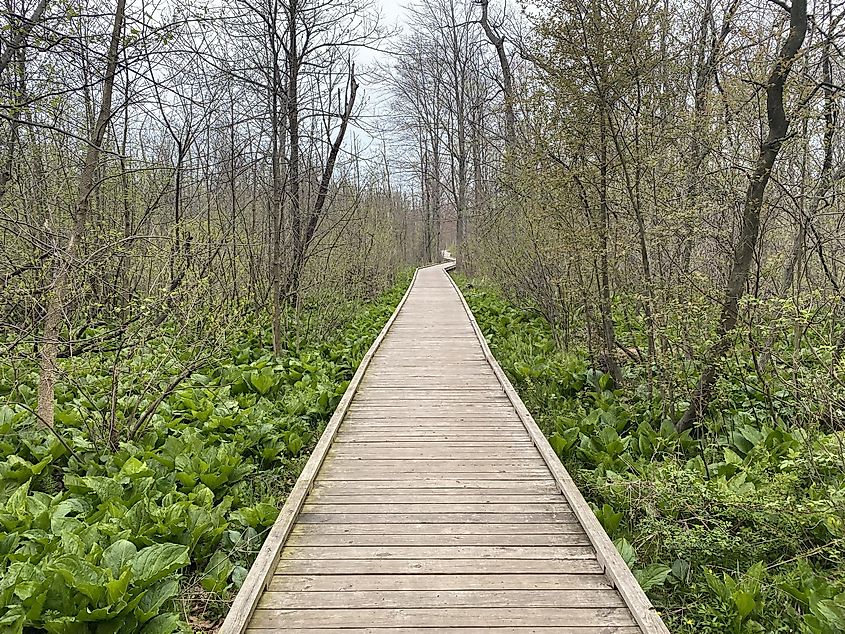
The 2,182-acre Indiana Dunes State Park exists within the 15,000-acre Indiana Dunes National Park. The collective public naturescape can be found in the northwest corner of Indiana, where it meets the southern tip of Lake Michigan and nearly equidistant from the Illinois (west) and Mighican (northeast) borders. The state park officially operates out of Chesterton - a modest-sized town in Porter County. Take State Road 49 all the way to its terminus to reach the entrance gates (just aim for the national park visitor center and then just continue straight).
Indianapolis residents can reach Indiana Dunes via a 150-160-mile northbound drive), whereas those coming from Fort Wayne face an approximately 120-mile, mostly-westward haul. Chicago, Illinois, whose skyline can be seen on the opposite side of Lake Michigan's wing, sits some 50 or so miles from the park.
Ecology
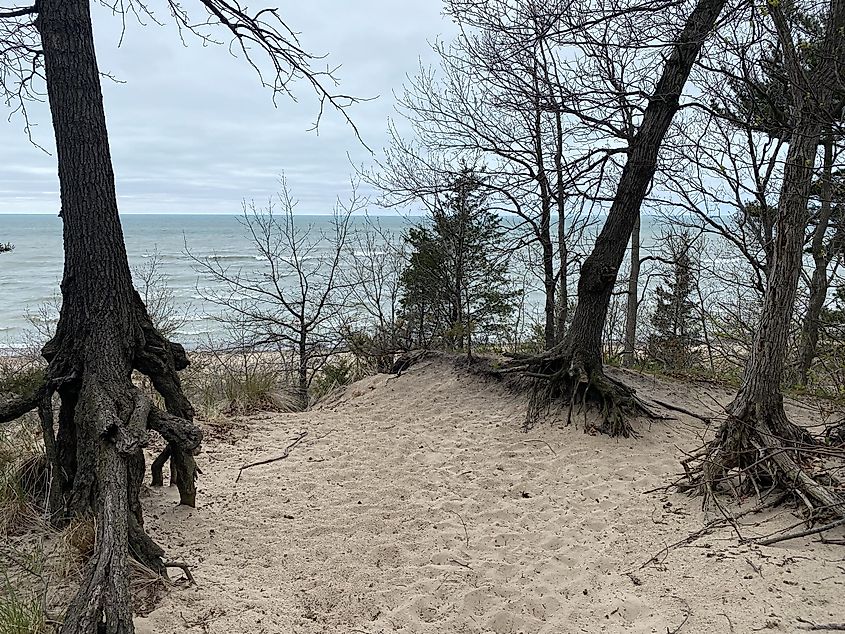
While nature as a whole is an ever-changing phenomenon, the landscape of Indiana Dunes State Park is particularly fluid. Stiff winds coming off the lake gradually blow the dunes inland, burying sections of forest in the process. Intrigued visitors should make a point of hiking Trail #9 where trees work to roll with the punches, and Trail #10, where "tree graveyards," have been exposed by wind erosion.
In conjunction with the freshwater ecosystem and substantial shoreline, Indiana Dunes also harbors wooded wetlands, black oak forests, and a button-bush marsh for good measure. Such an array of habitats fosters a wide spectrum of flora and fauna. The marshes are especially biodiverse.
Upwards of 46 species of mammals are present throughout the Indiana Dunes shoreline, including the eastern cottontail, eastern chipmunk, red fox, coyote, white-tailed deer, beaver, several species of squirrels, and in recent years, even some river otters have been spotted. There are also four additional mammal species that are supposed to be present, though not yet documented. In terms of conservational standouts, the American badger, which is listed as threatened at the state level, lives in and around the park. The Indiana bat is also thought to be present, and is classified as endangered at the federal level.
Given its position at the southern tip of Lake Michigan, this (former) national lakeshore is a strategic feeding and resting place for migratory birds. Over 350 species have been documented here, making it one of the best bird-watching hubs in the entire U.S. national park system. My experiences certainly verify this. From the moment I exited my vehicle in the parking lot of the nature center, my ears were engulfed in a cacophony of songbird whirls and chirps.
Adding to the animal list, there are approximately 18 species of amphibians, 23 species of reptiles, 71 species of fish, 60 species of butterflies, and 60 species of dragonflies/damselflies in the Indiana Dunes area. Plant life is also robust. Over 1,100 species of flowering plants and ferns occupy various niches within this space. Look to the bogs, oak savannas, and dunes for examples of floral diversity. On that note, when trudging about the dunes, note that the marram grass, sand reed grass, and cotton seedlings all work to stabilize these sandy juggernauts. For this reason, it is important to tread lightly and stick to the designated trails.
History
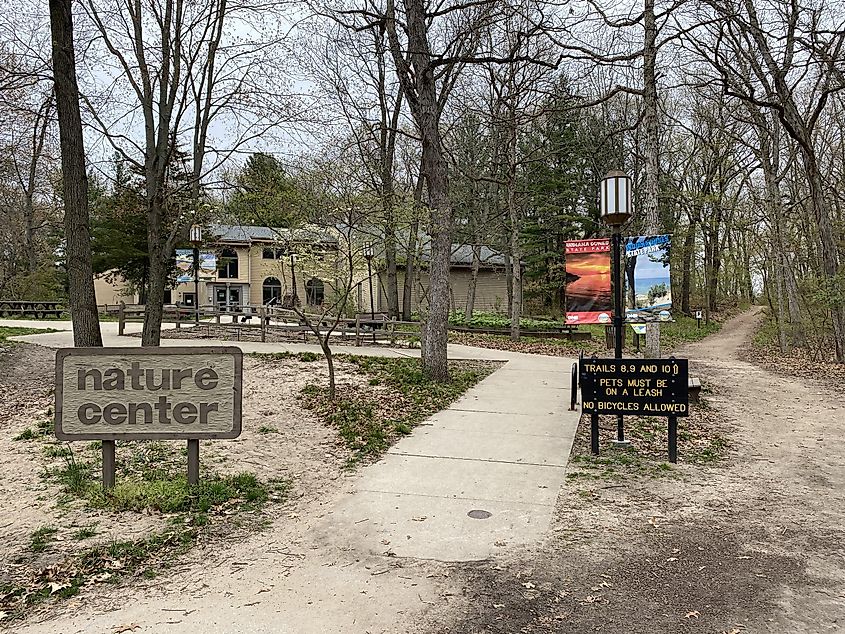
This unique lakeside landscape took shape at the end of the Pleistocene Epoch, better known as the last Ice Age. During this time, one to two-mile-thick glaciers covered not only the bulk of Canada, but descended as far south into modern-day America as Indiana. The incorrigible forces of these frozen behemoths ground mountains to boulders and boulders to sand. When the Wisconsin glacier (i.e. the last holdout in our region of focus) melted, Lake Michigan was formed. After a period of fluctuation, the water level eventually settled into a relatively lower state, thereby exposing huge amounts of sand that were subsequently blown into the magnificent dunes seen today (save for the 200-foot-tall Hoosier Slide, which was mined for sand before the state and national parks were ratified).
Jumping forward to the turn of the 20th century, scientists and outdoor enthusiasts banded together, recognizing the importance and delicacy of northwestern Indiana's shoreline ecosystem. Their campaign paid off in 1926, when Indiana Dunes State Park was established. Henry Cowles, aka the "Father of Ecology," was one such instrumental figure, thanks to his studies of plant succession that were conducted here in 1899/early 1900s. As a result, the Indiana Dunes area was bequeathed a venerable nickname of its own: "The birthplace of ecology."
Following the creation of Indiana Dunes State Park, the push continued to protect even more of Indiana's precious shoreline from encroaching industrialization. As a result, on November 5th, 1966, federal legislation recognized Indiana Dunes National Shoreline, which (following four land expansions) stretches for 15 miles, from Gary to Michigan City. Then, on February 15th, 2019, in an effort to boost attendance, the national shoreline was rebranded as Indiana Dunes National Park, thereby making it America's 61st (at the time) national park. The initiative paid off as, after the 2020 closures, annual visitation has been consistently and significantly above the pre-pandemic baseline. This brings us to a common question:
Is It Indiana Dunes State Park or National Park?
Both! But don't worry, I was also confused at first. Indiana Dunes State Park sits within Indiana Dunes National Park. While they occupy the same space and mostly the same ecosystems, both parks operate as distinct entities. This means that separate park passes will have to be purchased if you plan on seeing the full preserve. I opted to simply check out the state park, since it was fairly-priced (i.e. $7 for Indiana residents and $12 for out-of-state visitors) and had seemingly all the same highlights, albeit in a smaller space. With that said, holders of the America the Beautiful annual national park pass, or one-off day-trippers who want to check off a national park, will still reap exceptional value from the larger surrounding landscape.
Attractions/Amenities
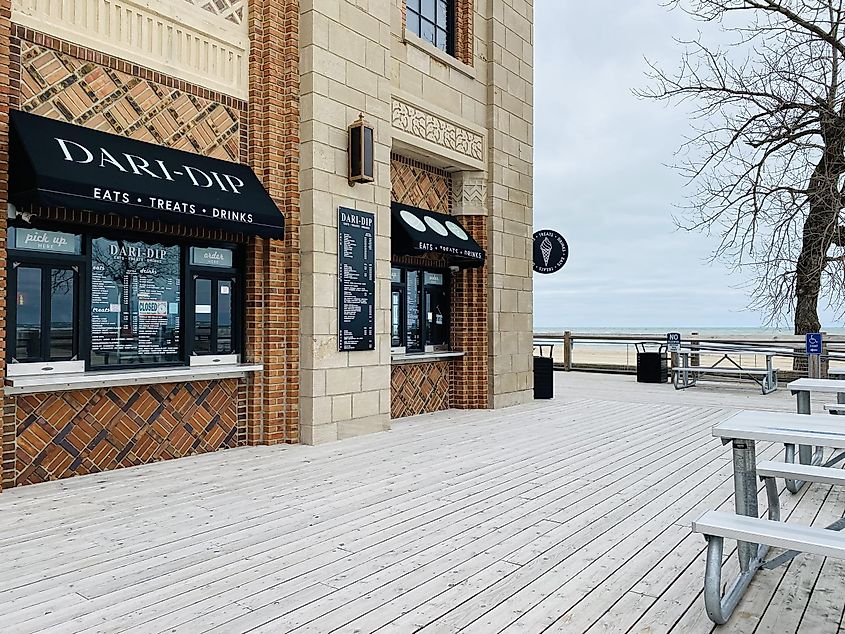
If you do choose the Indiana Dunes State Park instead of the national park, this is what you will have at your disposal:
- 3-mile-long (and wide) beach with designated swimming sections
- Beachside pavilion (summer only) with a snack bar, gift shop, bathrooms, outdoor showers, and an indoor events center
- Campground with 140 serviced sites and a youth group tent area
- Campground grocery store (summer only)
- Generous picnic areas
- Interpretive Nature Center
- 16+ miles of varied hiking/biking trails (i.e. rugged dunes, forested circuits, long wetland boardwalks, etc.)
- The "3 Dunes Challenge" (i.e. a 1.5-mile loop with a trifecta of ascents). Don't forget to get your souvenir sticker afterwards
- Cross-country ski trails in the winter
The Drawbacks
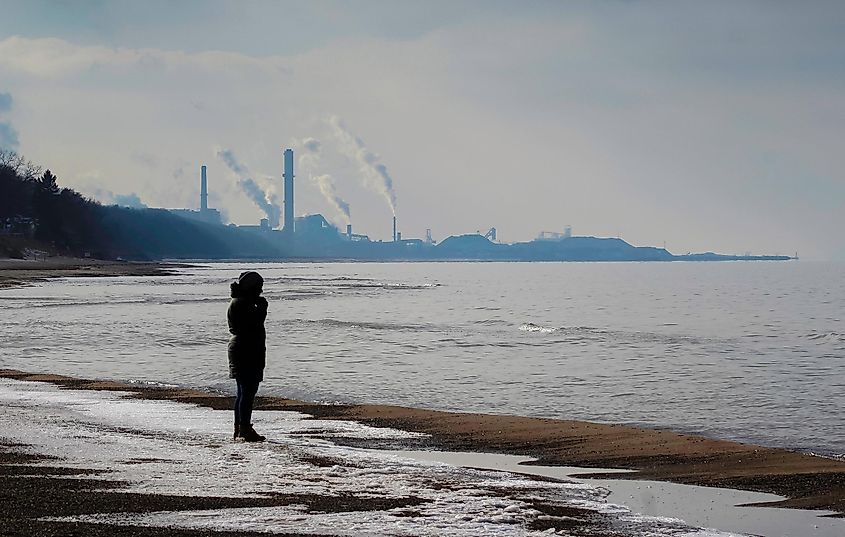
Indiana Dunes State Park is not without its downsides - minor as they may be. As previously mentioned, the state and national parks require separate passes to enter. This is sure to be a point of confusion for tourists for years to come. It would be nice if they could coordinate a dual-entry system so that the entirety of the standout shoreline could be enjoyed.
The other thing that might deter die-hard nature puritans is the presence of steel mills and power plants on the bookends of the beach. The park itself is immaculate, and the trails are immersive, but from the comfort of the sandy beach, the skyline is visually disrupted by modern industrialization.
Final Thoughts
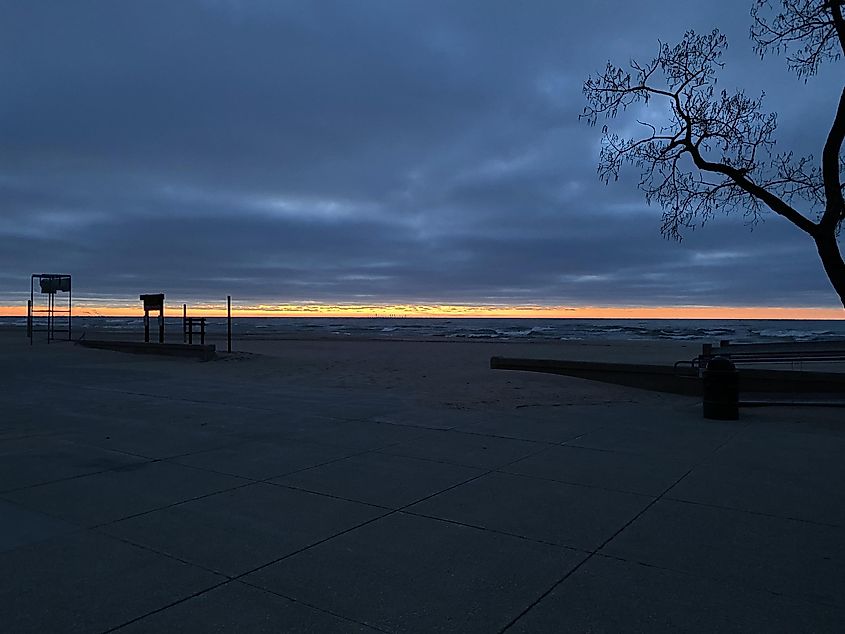
Indiana Dunes State Park surprised me. After wrapping up a family-centric visit to St. Charles, Illinois, I was told to check out Warren Dunes State Park in Michigan. But en route, I couldn't help but notice that there was another appealing stop even closer to my location. Though I did eventually make it to Warren Dunes - and it was also a very beautiful spot - I ultimately preferred my experiences in Indiana. So as Memorial Day approaches (i.e. the official end to the "off-season" in these parts), and all you campers, hikers, birders, and swimmers are looking for a viable outlet in the Midwest, I recommend setting your sights on Indiana Dunes State Park (or, if you prefer, the encompassing national park).
